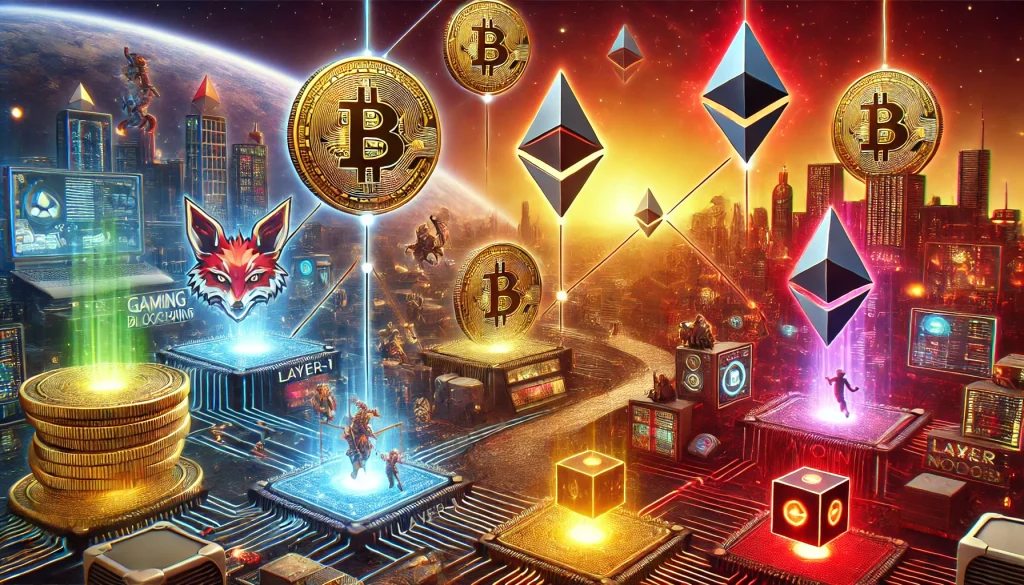The world of blockchain gaming is evolving at a rapid pace, becoming a significant force in the growth of web3. With nearly one-third of the daily active users in decentralized applications (dApps) coming from the gaming sector, it’s clear that GameFi is a powerful driver in the blockchain space. This surge in demand is prompting the creation of game-oriented blockchains that can handle increasing user loads and improve the user experience. The growth of gaming blockchains is expected to skyrocket in the coming years, both in terms of quantity and quality, as new innovations fuel the industry’s expansion.
In 2024, blockchain gaming set new records, with the number of daily unique active wallets (dUAW) reaching over four million—an all-time high. This impressive number accounts for approximately one-third of the 15 million daily users across the entire dApp market. The rapid rise in GameFi users has driven the need for specialized gaming blockchains, which offer improved scalability and user onboarding experiences.
The Early Days of Blockchain Gaming
When blockchain gaming first emerged, it was a niche space, often limited to enthusiasts willing to deal with slow transactions and high fees. Back then, Ethereum was the dominant network for blockchain games, but its Layer-1 infrastructure faced major scalability issues. Congestion on the network caused transaction delays and exorbitant fees, limiting the growth of GameFi.
As developers recognized that the Ethereum network couldn’t support the rapid expansion of gaming, they began exploring the idea of dedicated gaming blockchains. These new Layer-1 blockchains were designed specifically to address the unique challenges of blockchain gaming, providing faster transactions and lower fees.
One of the early pioneers in this space was WAX, a blockchain that initially focused on e-commerce but quickly shifted to gaming. By 2024, WAX had become one of the top ten gaming blockchains, partnering with major players like Amazon Prime Gaming and Epic Games Store. Other GameFi-focused blockchains soon followed, leading to the rise of specialized ecosystems built for gaming.
The Rise of Ronin: A Game-Changing Blockchain
Among the many gaming blockchains that emerged, one that stands out is Ronin, developed by Sky Mavis, the creators of the hit game Axie Infinity. By 2020, Sky Mavis had shifted its focus from developing individual games to building a full-fledged Layer-1 ecosystem. Ronin introduced innovative solutions like proof-of-authority and later delegated proof-of-stake consensus mechanisms, reducing transaction costs and energy consumption.
By June 2024, Ronin had surpassed even major blockchains like Solana and Tron in terms of daily active users, with over two million users on the network. The Ronin blockchain now supports 15 games, with plans for further expansion, making it a leading platform in the GameFi space.
Layer-2 and Layer-3 Networks: The Next Evolution in Blockchain Gaming
While gaming blockchains like Ronin and WAX have played a crucial role in shaping the industry, the introduction of Layer-2 (L2) and Layer-3 (L3) solutions is the next major step in the evolution of GameFi. Layer-2 networks, like Optimism and Arbitrum, were developed to improve Ethereum’s scalability, reducing gas fees and increasing transaction throughput.
However, it is the Layer-3 networks that are truly revolutionizing the space. L3 blockchains cut block times to as low as 100-300 milliseconds, achieving near-instant transaction finality. This allows for thousands of transactions per second, compared to Ethereum’s 12-15 TPS on Layer-1. PlayBlock, a GameFi L3 blockchain built on top of Arbitrum Orbit, has introduced key innovations like account abstraction and relayer technology, offering gasless transactions and simplified wallet management.
With L3 blockchains, players no longer need to manage their wallets, approve multiple transactions, or pay gas fees. This enhanced user experience has the potential to attract millions of new users, especially those coming from web2 gaming who were previously put off by the complexities of blockchain gaming.
Corporations Enter the GameFi Space
As blockchain gaming continues to gain momentum, major corporations are taking notice. Recently, Sony Group announced the launch of Soneium, a Layer-2 blockchain on Ethereum focused on gaming security and user-friendly gameplay. This development signals that large players in the gaming industry, such as Ubisoft, Rockstar Games, and Epic Games, may soon follow suit by launching their own gaming blockchains.
These corporate-backed blockchains will help accelerate the mainstream adoption of GameFi, driving further innovation and scaling solutions. As gaming blockchains become more prevalent, the L2/L3 infrastructure will play a critical role in shaping the future of the industry, allowing developers to quickly integrate cutting-edge innovations.
Rollup-as-a-Service Solutions: Streamlining Game Development
Another exciting development in the growth of gaming blockchains is the rise of rollup-as-a-service solutions. These allow developers to quickly launch customizable Layer-3 networks, reducing the time and effort required to build a new blockchain from scratch. With the existing infrastructure and support from Ethereum’s L2/L3 ecosystems, developers can focus on creating high-quality games while leveraging the scalability and cost efficiency of rollup technology.
The Future of Blockchain Gaming
The future of blockchain gaming is incredibly bright. With the growth of gaming blockchains and the emergence of Layer-2 and Layer-3 solutions, the industry is poised to go mainstream. The simplification of UX, gasless transactions, and the rise of customizable L3 networks will make GameFi accessible to millions of players who have yet to embrace blockchain technology.
The interest from major corporations, along with the continued innovation in web3, will likely lead to the birth of even more gaming-focused blockchains in the near future. As the industry evolves, blockchain gaming is set to dominate the web3 landscape, providing endless opportunities for both developers and players.


